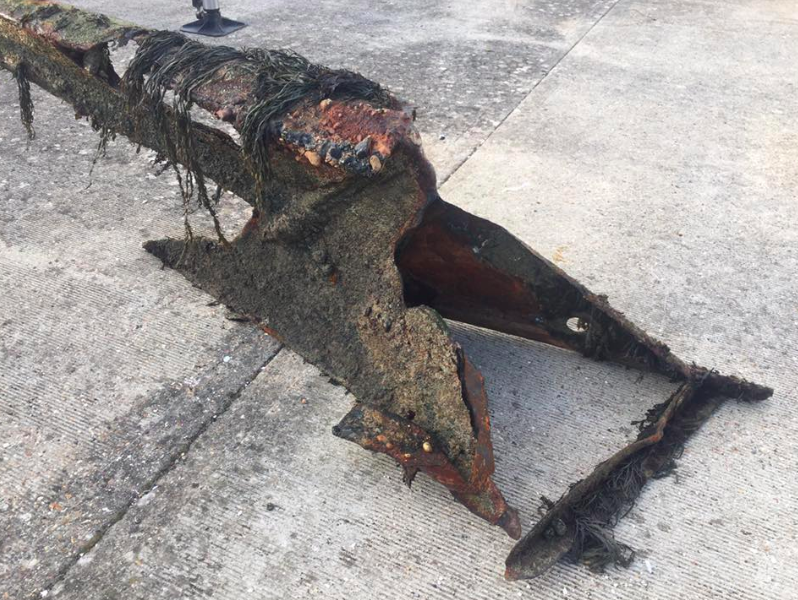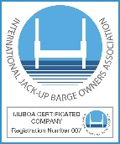
On Tuesday 9 October, leading marine construction and renewables firm, Red7Marine, successfully recovered several historic kite anchors which were designed for the Mulberry Harbours in the D-Day landings. The anchors were retrieved from the Isle of Wight foreshore.
The anchors were designed by civil engineer, Allan Beckett MBE, who also designed the ‘Whale’, a floating roadway which was integral to the successful installation of the Mulberry Harbours. The invention played a crucial part in supporting the D-Day landings as a floating road to unload cargo and troops.
Few of the anchors survived after the Normandy landings of June 1944, however Red7Marine was honoured to be involved in the salvage project to recover the remaining anchors from the Isle of Wight.
Working for the National Museum of the Royal Navy, Red7Marine successfully recovered the anchors from the Isle of Wight and safely transported them to the Mary Rose Trust for conservation to preserve these important items of maritime history.
Nick Offord, Chief Executive at Red7Marine commented: “We were delighted to be involved in this prestigious project reflecting the maritime history of Britain. Allan Beckett’s invention is widely considered as one of the greatest engineering inventions of World War Two and it was amazing to play a part in the kite anchor’s history. Red7Marine’s experienced, diverse team has the ability to carry out over-water operations and it was a pleasure to be involved in retrieving these historic items.”
Tim Beckett, Director, Beckett Rankine adds: “The Beckett Family is delighted with the salvage of these Kite anchors from the bed of the Solent. Until recently we have only been aware of a single surviving Kite anchor, which is in a private museum in Normandy.
My father’s design for the Kite anchor was unusual in that it had a holding capacity of 90 times its weight, a figure which even today remains remarkable. The anchor achieved this performance by burying itself ever deeper under load, which in turn made it very difficult to recover after use. As a result few, if any, of the 2,000 used for the Mulberry Harbours were ever recovered. These anchors from the Solent never made it to Normandy and lay discarded on the seabed until Hilary Martin, a local sailor with an interest in history, realised what they were.
The recovery of these anchors by Red7Marine will now enable five UK museums to boost their collections helping to tell the story of the D Day landings, the Mullberry Harbours and the liberation of Europe.”















